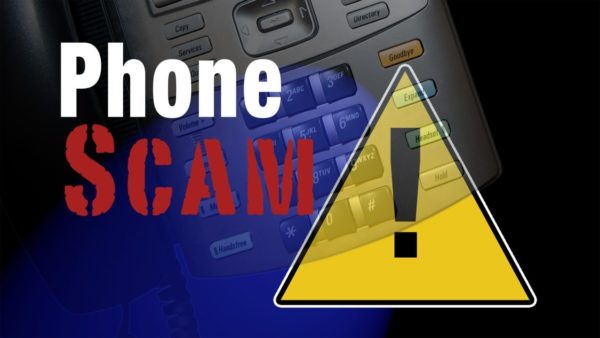It was the deflated clump of balloons floating in Unicorn Lake that really did it.
When Jay Falstad found them near his home on Maryland’s Eastern Shore, he dutifully called the Dayton, Ohio, family that had released the balloons — four days earlier from more than 500 miles away — with an “if found” note.
“They just wanted to see how far they would go,” said Falstad, an environmental activist. “The irony is almost too much.”
The family’s whimsical experiment unwittingly set in motion the country’s latest ban on releasing helium-filled balloons, part of a national trend that views such “balloon pollution” as, at best, tantamount to littering.
Balloons have the potential to harm marine animals, who can ingest them or become entangled in their strings.
Bans on single-use plastics, such as straws and bags that end up in oceans, have garnered much more attention than the ills of wayward balloons, which don’t crack the list of the top 10 most prevalent ocean debris worldwide, experts say. In March, the European Union included cotton swabs in its sweeping ban on single-use plastics, but it didn’t bother including party balloons.

Assateague mare T6CHU April, May 27, 2019 on the Assateague OSV (over sand vehicle beach) in Maryland. A strand of ribbon from a balloon hangs from the mare’s mouth. (Ann Richardson/Ann Richardson)
[Europe bans single-use plastics. And glitter could be next.]
But research into balloon debris is, well, ballooning. Activists who had been toiling on the fringes for decades say their work appears to be at a tipping point.
“It’s picking up speed,” said Danielle Vosburgh, co-founder of the Florida-based advocacy group Balloons Blow.
At least five states and more than a dozen cities nationwide have some form of a ban, including Virginia and Baltimore. More than a half-dozen other states have considered prohibitions in recent years, according to the National Conference on State Legislatures.
Last summer, Clemson University, under pressure from animal rights activists and environmentalists, decided to abandon its three-decade tradition of releasing thousands of orange helium-filled balloons while the football team stormed into the stadium at each home game.
The latest ban was an easy sell to the all-Republican Board of County Commissioners in Queen Anne’s County, Falstad and others said, since once someone points out balloon debris it is hard not to notice it.
That’s what happened to Falstad after the Unicorn Lake discovery: He suddenly saw ribbons in hedgerows, flashes of foil along the highway and biodegradable latex not quickly degrading along his rural county’s miles of marshy shoreline.
“It’s one of those problems hiding in plain sight,” he said. “You don’t really focus on it, but once you do, they’re everywhere.”
Commissioner Christopher Corchiarino sponsored the ban at Falstad’s urging and said there was no real opposition, even among constituents who generally don’t like expanding government regulation.
Once he started talking about the idea, he said, complaints about spooked horses and unwanted debris abounded. He said one constituent discovered a balloon from the Indianapolis 500 race, 600 miles away.
“It looks neat when they go up into the sky, but they come down,” Corchiarino said. “What’s the difference between that and driving by your neighbor’s farm and throwing a McDonald’s bag on it?”
The local ban, unanimously approved last week, carries a $250 fine. It exempts “unintentional negligence.”
“If your kid gets a balloon at a carnival and has slippery hands, don’t worry,” he said. “The sheriff’s deputies aren’t going to jump all over you.”
Emma Tonge, communications director for the Marine Debris Program at the National Oceanic and Atmospheric Administration, said balloons are not among the world’s top 10 ocean pollutants. But researchers in Australia recently suggested that they might “be among the most harmful to sea birds, turtles and marine mammals,” she said.
“We don’t have a lot of information on how widespread it is,” she said. “We don’t have a full picture of the issue.”
Newer surveys of U.S. coastlines suggest that the balloon problem is more prevalent in this country than worldwide. During a nine-year period ending in 2016, the International Coastal Cleanup program found an average of 31,000 balloons on U.S. beaches each year.
Researchers in Virginia, working with a NOAA grant, last year released a surprising study about the local problem. After four years monitoring five uninhabited beaches, the team discovered that balloon fragments were the most prevalent type of debris.
[On patrol with the enforcer of D.C.’s plastic-straw ban]
They collected more than 11,400 pieces between 2013 and 2017, along with plastic balloon valves, ribbons and the occasional laminated note addressed to someone in heaven.
“When we asked people who release balloons where they thought they went, the number one answer was, ‘I never even thought about that,’ ” said Katie Register, who works for Clean Virginia Waterways at Longwood University and led the research project.
That research formed the basis of a new, federally backed advocacy campaign called “Joyful Send-off” that attempts to try to change balloon-release behavior in the Mid-Atlantic region.
Tonge said people concerned about balloon debris can take action on their own: “One of the easy things you can do is if you have a balloon, hold on to it. Or, you can just skip the balloon in the first place.”
That’s the kind of talk the Balloon Council worries about, the kind that could give balloons a lasting negative stigma.
“It’s not the product that harms the environment, it’s the misuse that does,” said Lorna O’Hara, executive director of the Balloon Council, a trade group that advocates “smart balloon practices.”
She said the council weighs in on proposed bans across the country because “there’s a slippery slope from balloon-release bans to balloon bans.” She says that she hasn’t lobbied in favor of balloon releases but that she’s lobbied against language that called for jail time for repeat violators.
“That’s excessive,” she said. “Our stance is that balloons should be weighted [down] and enjoyed.”
One chief target of the anti-balloon release crowd is the Indianapolis 500 race, which has opened the annual event by releasing thousands of helium-filled balloons since 1947. A spokesman declined to say exactly how many balloons are released, but he noted race planners use a rubber-derived latex that can biodegrade and do not use strings or ribbons.
“We continue listening to and evaluating feedback from multiple perspectives on the balloon release,” race spokesman Alex Damron said in a statement. “We’re talking with experts to fully understand the impact of this practice and determine its status in the years ahead.”
After a public controversy over the release last year, the Indianapolis Star newspaper conducted an 11-month “citizen science” investigation to look at how much similar balloons can degrade over time. The conclusion: not much.
Last week, Balloons Blow — the anti-balloon-release advocacy group — took aim at another prolific source: students at the University of Nebraska. It addressed them with a billboard not far from campus that says: “We know better. Let’s do better.”
For a half-century, students there have released red helium balloons during football games at Memorial Stadium. An Omaha resident sued to stop the practice but the lawsuit was thrown out. In March, students voted to keep the balloon release but ban plastic bags on campus.
Read more:
A campaign to eliminate plastic straws is sucking in thousands of converts
This baby sea mammal captured people’s hearts. She just died from eating plastic.
EPA chief will focus on ocean trash, not climate change, at upcoming global summit
Local newsletters: Local headlines (8 a.m.) | Afternoon Buzz (4 p.m.)
Like PostLocal on Facebook | Follow @postlocal on Twitter | Latest local news


